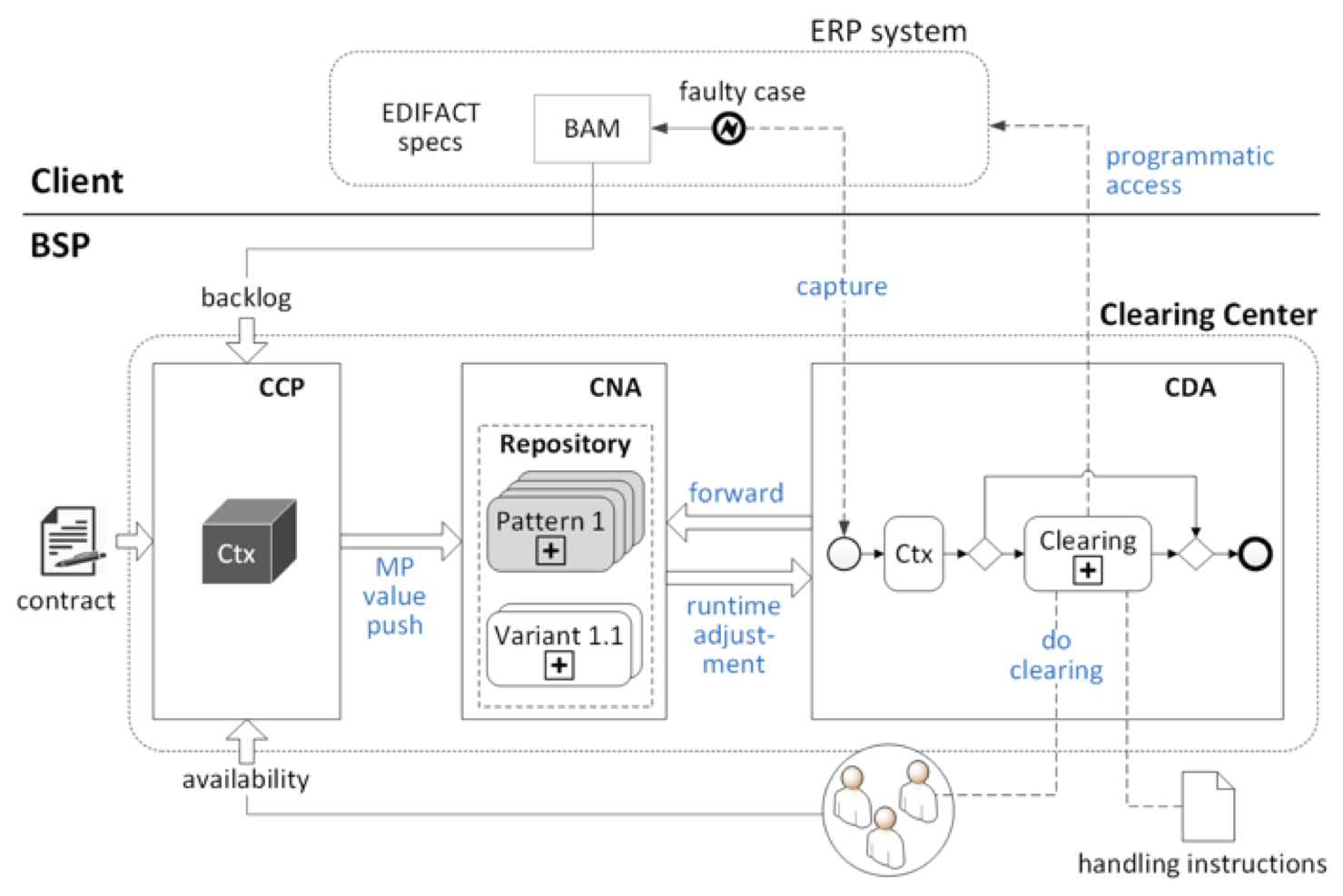Use case at SIV
The use case is fundamentally linked to the provision of business services by SIV’s subsidiary SIV Utility Services GmbH. The SIV group is a holding company in which SIV.AG is the vendor of the ERP platform kVASy® while SIV Utility Services GmbH acts as a business service provider (BSP) for the very same ERP platform. The use case is based on the exchange of energy consumption data between grid access provider and supplier. The underlying scenario is shown in figure below.

Such a business-to-business interaction is an example of what is called market communication. Note that market partners usually run a cross-commodity business, including electricity, natural gas, water supply and district heating. In the utility sector, market communication is an indispensable and important value chain element of supplier and grid access provider likewise. Usually it requires the processing of bulk data that are transmitted within a single file.
Upon reception of an MSCONS file from a market partner, the balance supplier executes a business process to import the transmitted values into his ERP system. This process includes a file-level check, a validation step and the processing of the individual meter readings. Due to the complex nature of the market rules, meter readings are frequently found to be in conflict with other data. Many of these conflicts cannot be resolved programmatically by the ERP system itself, but rather require manual clearing intervention by a domain expert.
In the scenario shown in the figure above, clearing can be done either by the client or by the BSP. In SIV’s use case, the service provider is Utility Services GmbH, which is a member of the SIV group. A contract specifies operative conditions, such as commodity, type of measurement and the receivers’ market role, upon which the service provider shall take care of failed MSCONS process instances. In kVASy®, the status of each of the client’s business processes (including the ones that have failed) is monitored by a process monitoring system (ProMo). The standard capability that Utility Services GmbH offers to kVASy® clients is termed “clearing of MSCONS cases”. With the advent of CDD the use case has altered into “dynamic BSP support” which points to the fact that it has become much more driven by context changes than before. In the original business architecture of the BSP product “clearing of MSCONS cases” the product is delivered completely manually. There was no programmatic support for context integration, nor is there any application that automatizes the BSP’s business logic. Furthermore, clearing procedures were not executed in a BPM (business process management) process engine, although business experts always follow recurring procedural patterns. In fact, there was no process automation at all. Service delivery follows client-specific written handling instructions (i.e. a contractual agreement) and the business expert must be continuously aware of its content. This situation was inherently static and does not enable dynamic, context-driven changes to service delivery.
When designing the CDD solution, a thorough business-centric approach is followed, best understood from the business architecture’s perspective, as shown in figure below.

Patterns supporting this case are available in the CaaS pattern repository here.
This video demonstrates the overall principles of the use case (140MB, opens in separate window).